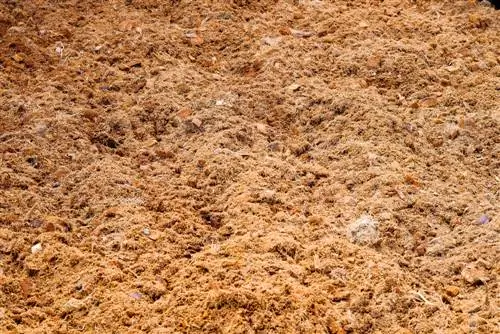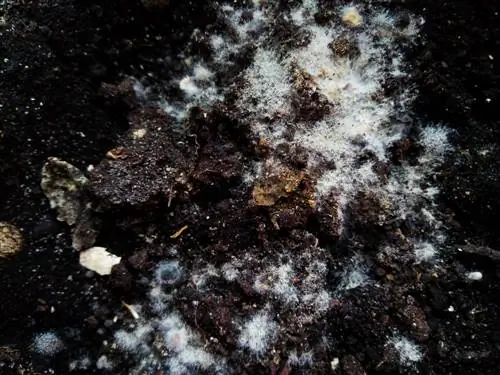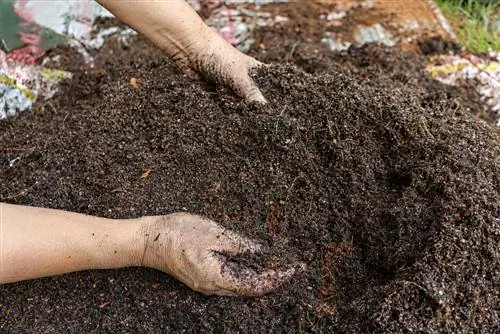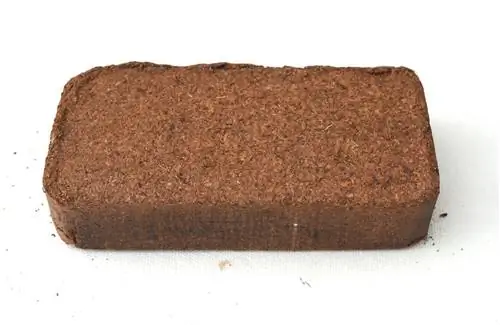- Author admin [email protected].
- Public 2023-12-16 16:46.
- Last modified 2025-01-23 11:22.
If coconut soil becomes moldy, the pot becomes a mined area for plants. A variety of causes cause the damage. Read this guide for useful tips and tricks in the fight against mold on coconut hum.

What to do if coconut soil is moldy?
If coconut soil becomes moldy, you can combat the mold by unpotting the plants, removing the moldy coconut, disinfecting the pots and placing the plants in fresh coconut fiber substrate. Moderate watering helps prevent mold from recurring.
Moisture causes coconut soil to mold
Coconut soil's mold resistance only lasts until air and water are added. Indoor air and wind always carry invisible mold spores, which settle on sterile, slowly rotting coconut fiber. Here the pathogens lurk on dead plant material as food. In connection with high humidity and water, the mold infestation becomes visible as a white coating on the earth.
Repotting and optimizing care
Once coconut soil becomes moldy, seedlings and potted plants growing in it are massively threatened. Brazen mold spores use the smallest injuries as a portal of entry into the conductive pathways of shoots and leaves. It doesn't have to come to this if you take these countermeasures:
- Unpot affected plants, lift seedlings out of the coconut soil with a spoon
- Remove moldy coconut completely
- Clean pots meticulously and disinfect with alcohol or spirit
- Place plants or seedlings in fresh coconut fiber substrate
- Watering more moderately from now on
By the way, you can safely dispose of moldy coconut soil in the compost heap. At this point the fungal spores are welcome to take part in the decomposition process. Only with the help of the hard-working microorganisms does dead plant material transform into valuable compost.
Sterilizing additives in the oven
The use of coconut soil is not limited to growing plants. Mixed with conventional potting soil or garden soil, coconut fibers transform into wonderfully airy, permeable plant soil. The combination with humus poses the risk of mold formation within a short period of time.
You can prevent this problem by disinfecting humic additives in the oven beforehand. This can be done in a fireproof bowl with a lid on. Beforehand, spray the soil with a fine spray. After 30 minutes at 80 to 100 degrees Celsius, all pathogens are destroyed.
Tip
White deposits on coconut humus are not necessarily mold. In fact, the damage can usually be traced back to more harmless causes. First and foremost, hard irrigation water settles on the substrate in the form of whitish limescale edges. If you fertilize lean coconut soil, fertilizer efflorescence will appear that look very similar to mold.






